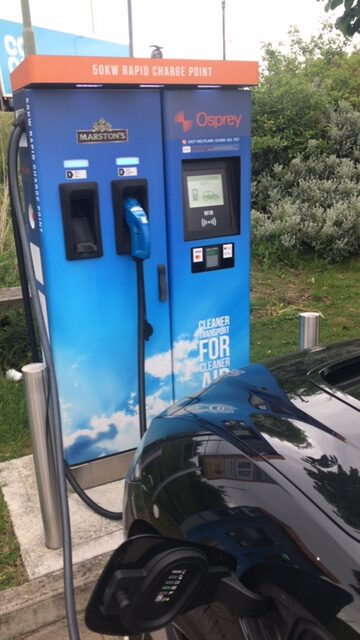Its time to bite the bullet and make the change – to a full EV
With petrol price soaring and set to reach even higher levels, and with the price of an average unleaded tank full now being over £100, and even more for SUVs and diesel cars, it’s the right time to go green.
–
Even at relatively low mileage of £15000 miles per year – electric charging will save you £5100 over fuel per annum: Over a 4-year agreement – that’s £20,400 saved on fuel, less the increased price of an electric car. If you do 20,000 miles per year, the saving is £7000 per annum or £28,000.
–
New generation EVs like the Hyundai Kona EV seems great value – with and advertised range of 300miles on one charge, but in reality – with aircon on and your sound system, headlights and etc, its 265 miles per charge, which compares to a Tesla model 3 and the Jagua IPace – but at 40% of the price.
–
I just did a quick calc and it also means a gross saving of 26,928kg of CO2 (we would need to take into account the CO2 footprint of the electricity used – obviously low if you are with Octopus or Green Energy), but still quite staggering 27 tons per car over 4 years!
–
This is an equivalent to 1,282 tree/years, so it means it would take 320 fully grown trees over 4 years to absorb 27tons of CO2! How good would that feel?
–
Few people realise that 95% of journeys can be made from a home charge – just plugging in your charger into an outside socket, or as my son does, in his GF flat, out the window to an inside socket. OK – its slow to charge from zero, but most charges are top-ups, for relatively short everyday journeys. It’s only long journeys, where the round trip is greater than 260 miles that you’ll need to plan ahead to find reliable public chargers. Like everything in life, charger savviness is a matter of learning and experience. Use the pay-as-you go reliable chargers, such as Pulse, Shell re-charge, Gridserve, Instavolt, Ionity and Osprey. Others – you’ll need the ap for. It helps to have the ap for all of them – if you experience issues. Don’t be slow to call the hotline on the charger information board – if you cant get it to work: it speeds up the result and reduces a lot of frustration.
–
Key advice: Plan to have 3 possibilities for charge stops, so if one is busy or broken, you have a plan B and C, and always leave 50 miles spare before seeking a charger – if out on the open road. I went to Cornwall in my EV – all the way from Norfolk, and charged once at Banbury Instavolt (brilliant venue), once at Ionity at Collumpton services and then finally in Cornwall – (near the destination) at a Genie Point (need the ap for that).
–
Happy EV driving. Never visit a grubby petrol station again, enjoy the benefits of a good break from driving long distance for an hour, and save the planet, whilst saving loads of money.
–





